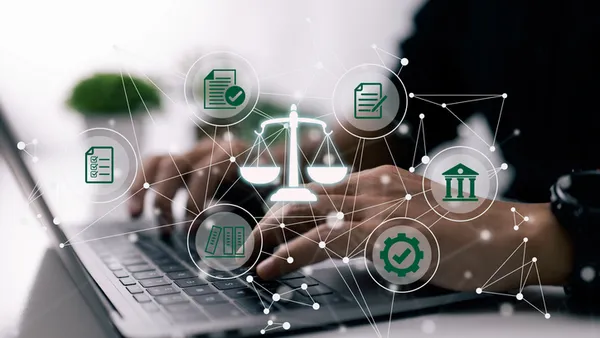In-house legal executives and law firms need to determine precisely what they’d like an AI software solution to achieve in their department or practice before embarking along this potentially difficult path, according to a panel of legal technology experts.
Senior leaders should approach the task with specific questions, Kristel Kurtz, a partner with Cherry Bekaert, an accounting and advisory firm, said Wednesday on a webinar with three other executives exploring the topic of how AI will impact the legal profession in 2025 and later.
Among those questions:
- Why would I use AI to solve this particular problem?
- What kind of value creation does my department need from this solution?
- What are the associated risks?
- What’s the appropriate speed of implementation?
“What’s a good place and why is AI the right solution?” Kurtz said of the initial framework for a legal leader’s evaluation. “And then how do you make progress along the way and set yourself up for success? A part of this is explaining within your organization ‘why’ and ‘why now.’”
In today’s legal work, AI tools are most widely used for document production, contracting, contract compliance and electronic discovery. Some legal executives are trialing AI applications in relatively low-risk areas away from external work, such as managing parts of their own business or invoice collections, Kurtz said.
This technology journey has not been easy for most lawyers, said Rhys Hodkinson, chief revenue officer for Definely, a London-based legal tech company.
“The rose-tinted glasses have come off and there’s a sobering realization” that GenAI will be an extended, costly implementation for most in-house legal departments and law firms, said Hodkinson, a former M&A attorney with Baker McKenzie. Many legal executives underestimated “the lift required to translate the consumer use cases into an enterprise-wide [AI] solution.”
In 2024, generative AI entered the “trough of disillusionment” on Gartner’s annual “Hype Cycle for Emerging Technologies,” the technology consultancy said last month. Generative AI is expected to enter a period of business productivity in two to five years, Gartner predicts, meaning that numerous industries such as legal will experience plenty of growing pains along the way.
Currently, generative AI’s benefits rest on “automating low-value tasks,” which “significantly” affects a legal operation’s return on this technology investment, Hodkinson said. Higher-value AI use cases and deployments remain in the early stages. “Lawyers are quite fickle,” he said. “If they have a poor result with the output … it is very hard to convince them to go back to that software and continue using it.”
However, consumer technology trends are helping speed AI adoption across the economy, said George Socha, senior vice president of brand awareness at Reveal, a Chicago-based maker of AI-powered e-discovery and other legal software.
Apple is expected to unveil its latest line of iPhones on Monday, with AI a critical marketing component of the new devices. Likewise, Google has implemented its Gemini AI software assistant on its rival Pixel smartphones.
“Apple is helping us out greatly with this. Google is greatly helping us,” Socha said. “It makes the whole adoption paradigm very, very different and we think it's going to accelerate the [enterprise] adoption rates enormously.”
The growth of AI for legal work also raises the question of whether the technology will disrupt the traditional billable hour paradigm, said Brad Blickstein, founder of the Blickstein Group, a legal technology consultancy.
One likely outcome will be an increasing use of alternative fee arrangements as lawyers begin to see that generative AI tools and different fee structures can boost their income, Blickstein said. “The hourly bill is still the best way for law firms to maximize their profit,” he said. “As soon as there’s a better way for them to maximize their profits, just like any seller, then they’ll shift.”
Client agreements are also likely to shift to include how generative AI and data will be employed and how particular cost savings will be parsed and allocated between firms and clients, Hodkinson said. “At some point, someone will start to win based on alternative-fee structures, and then you’ll see a shift,” Kurtz said.
The webinar was sponsored by Cherry Bekaert, Definely and Reveal.











